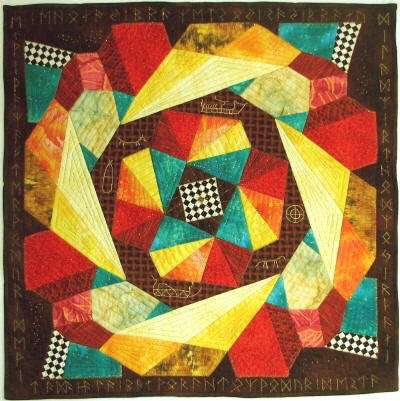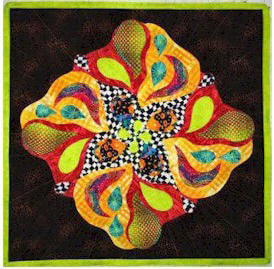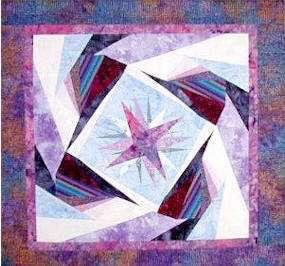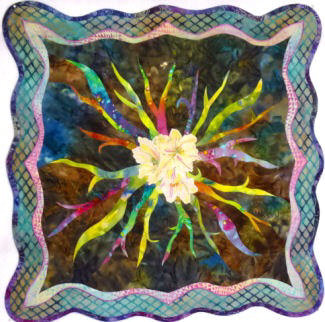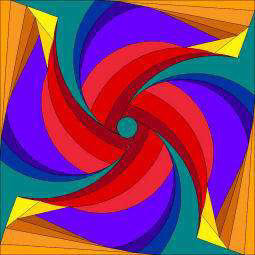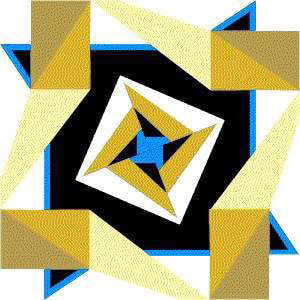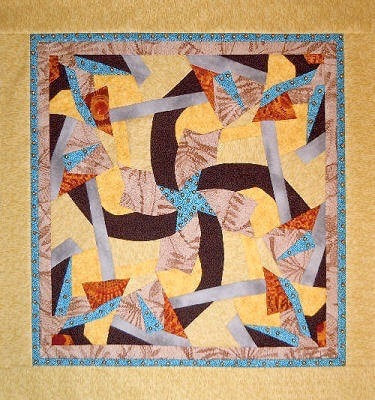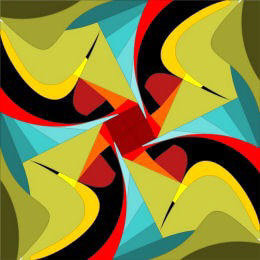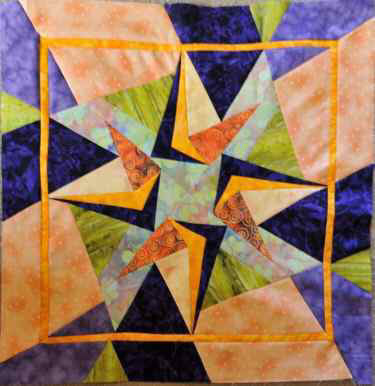Student Work from Designer Pinwheels
Workshop Details for Designer Pinwheels
Designer Pinwheels is great for getting you started if you have never designed before. Designer Pinwheels presents a different way of thinking about design. The methods concentrate on the underlying design structure, not the image itself. The structure of a Designer Pinwheel is the same as a child’s pinwheel.
Working with a Designer Pinwheel structure, you can design many quilts and have no two look alike. Based not on a block but on a tessellated right triangle, this design structure offers great possibilities for new images that cannot otherwise be achieved.
No natural talent, or prior art training, is required. Follow the simple instructions and see your original design ideas unfold before you.
And give no thought to how you're going to make these designs. Dena will teach you her special sewing methods to make any Designer Pinwheel. If you can draw it, you can piece it!
Designer Pinwheels is a great class for anyone willing to experiment and move beyond the limitations of other quilters' designs.
Working with a Designer Pinwheel structure, you can design many quilts and have no two look alike. Based not on a block but on a tessellated right triangle, this design structure offers great possibilities for new images that cannot otherwise be achieved.
No natural talent, or prior art training, is required. Follow the simple instructions and see your original design ideas unfold before you.
And give no thought to how you're going to make these designs. Dena will teach you her special sewing methods to make any Designer Pinwheel. If you can draw it, you can piece it!
Designer Pinwheels is a great class for anyone willing to experiment and move beyond the limitations of other quilters' designs.
|
|
Supplies for Designer Pinwheels
Freezer paper and fusing agents, particularly those that bond one layer of fabric to another like WonderUnder and StitchWitchery, are not suitable for these designs. You need non-woven fusible interfacing such as Pellon series 911 or Vilene H250, lightweight but somewhat stiff. Rotary cutting equipment is not required, and indeed, may not be used. Never use a craft knife on a rotary cutting mat. It cuts irreparable gouges in the mat. Batting is not required until you are ready to quilt a designed patchwork quilt top, and you may not get that far in the 6-hour session.
- A small selection of fabric scraps from your stash (don't buy anything new!)
- Optional 1 square yard or meter of lightweight non-woven fusible interfacing, chosen to add the least amount of support to your usual preference of fabrics. The interfacing should have heat-activated adhesive on one side only. I recommend Pellon 900 series, specifically Pellon 911, or Vilene H 250.
- Sewing machine and regular sewing kit:
- Standard needles for piecing and quilting
- Regular sewing foot for piecing
- Selection of threads
- Optional choice of notions for embellishments (cords, laces, trims, beads, buttons, and others)
- Ruler (a yardstick would be good to have on hand for measuring, but a drafting ruler for drafting straight lines is also needed)
- Pencil, eraser, or rubber
- Fine point black permanent marking pen
- Disappearing or washable ink fabric marking pen
- Masking or cellophane tape
- Craft knife with very sharp blade and a piece of cardboard to use it on
- A design board or wall
- Paper for small-scale drawings and tracings – 1/4” grid graph paper and tracing paper, several sheets of each
- One or more large sheets of brown paper or newsprint to draft a pattern on, each at least half the size of the finished quilt
